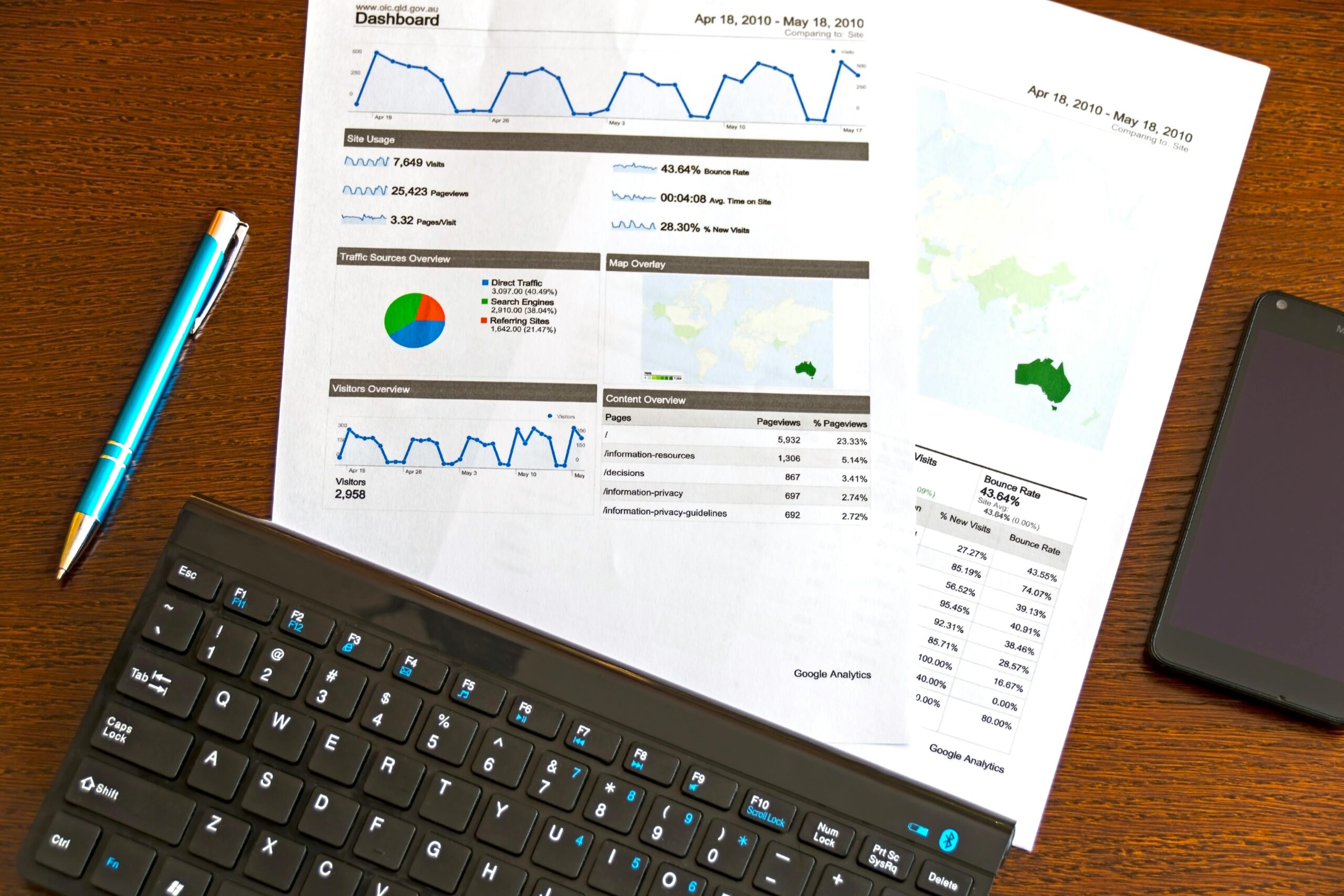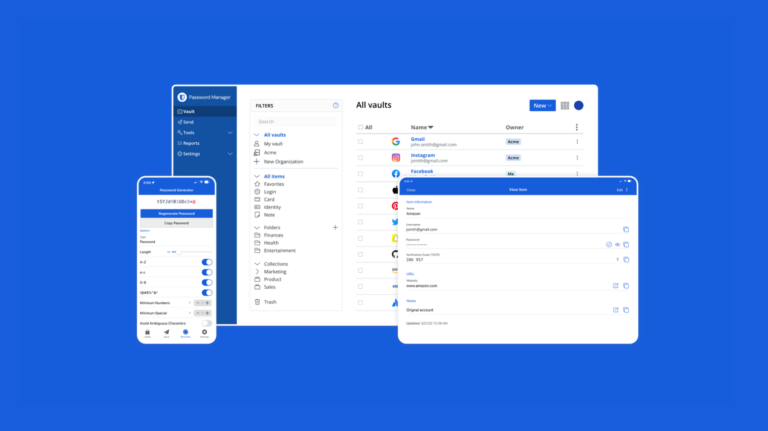
The Importance of Web Analytics for Your Marketing Strategy: How to Use Web Analytics
Introduction
In the fast-paced world of digital marketing, understanding your audience, their behavior, and the effectiveness of your marketing efforts is paramount. Web analytics provides invaluable insights that can shape and refine your marketing strategy, driving better decision-making and improved outcomes. This comprehensive guide explores the importance of web analytics and how you can leverage this data to enhance your marketing strategy.
Understanding Web Analytics
Web analytics is the process of collecting, analyzing, and interpreting data related to the behavior of visitors on your website. This data can include information on how users arrive at your site, the pages they visit, the time they spend on each page, and the actions they take. By understanding these metrics, you can gain a clearer picture of your website’s performance and the effectiveness of your marketing campaigns.
The Benefits of Web Analytics
1. Enhanced Understanding of Audience Behavior
Web analytics tools, such as Google Analytics, provide detailed information about your audience’s demographics, geographic location, device usage, and browsing behavior. This data allows you to create more accurate customer personas, understand the needs and preferences of your audience, and tailor your marketing messages accordingly.
2. Improved Campaign Performance
By tracking the performance of your marketing campaigns, you can identify which strategies are working and which need adjustment. Web analytics helps you measure key performance indicators (KPIs) such as conversion rates, click-through rates (CTR), and return on investment (ROI), enabling you to optimize your campaigns for better results.
3. Data-Driven Decision Making
With access to comprehensive data, you can make informed decisions rather than relying on intuition or guesswork. Web analytics provides concrete evidence of what works and what doesn’t, allowing you to allocate resources more effectively and prioritize initiatives that yield the highest returns.
4. Enhanced User Experience
Understanding how users interact with your website can help you identify areas for improvement. Web analytics can reveal issues such as high bounce rates, low dwell times, or problematic navigation paths. By addressing these issues, you can enhance the user experience, leading to increased engagement and higher conversion rates.
5. Competitive Advantage
Analyzing your web analytics data can provide insights into industry trends and competitor strategies. By staying informed about the latest developments and understanding how your competitors are performing, you can adjust your strategy to stay ahead of the curve and maintain a competitive edge.
Key Metrics to Track
To make the most of web analytics, it’s essential to track the right metrics. Here are some of the key metrics you should monitor:
1. Traffic Sources
Understanding where your visitors come from is crucial for evaluating the effectiveness of your marketing channels. Traffic sources can include organic search, paid search, direct traffic, referral traffic, and social media. By analyzing traffic sources, you can determine which channels are driving the most traffic and focus your efforts accordingly.
2. Bounce Rate
The bounce rate is the percentage of visitors who leave your site after viewing only one page. A high bounce rate can indicate that visitors are not finding what they’re looking for, or that your site’s content or user experience needs improvement. Lowering your bounce rate can lead to increased engagement and higher conversion rates.
3. Average Session Duration
This metric measures the average amount of time visitors spend on your site during a single session. Longer session durations generally indicate higher levels of engagement and interest in your content. By analyzing this metric, you can identify which pages or content types are most effective at retaining visitors.
4. Conversion Rate
The conversion rate is the percentage of visitors who complete a desired action, such as making a purchase, filling out a form, or subscribing to a newsletter. Tracking conversion rates for different campaigns and landing pages can help you identify what’s working and optimize your efforts to increase conversions.
5. Pages Per Session
This metric indicates the average number of pages a visitor views during a single session. Higher pages per session suggest that visitors are engaged and finding your content valuable. By analyzing this metric, you can identify popular content and improve internal linking to encourage further exploration.
6. Exit Pages
Exit pages are the last pages visitors view before leaving your site. Identifying common exit pages can help you understand why visitors are leaving and address any issues that may be causing them to leave prematurely.
How to Use Web Analytics to Improve Your Marketing Strategy
1. Set Clear Goals and Objectives
Before diving into web analytics, it’s essential to establish clear goals and objectives for your marketing efforts. These goals should be specific, measurable, achievable, relevant, and time-bound (SMART). Examples of goals include increasing website traffic by 20% over the next six months, improving the conversion rate by 15%, or reducing the bounce rate by 10%.
2. Implement Tracking and Analytics Tools
To collect and analyze data effectively, you need to implement robust tracking and analytics tools. Google Analytics is one of the most popular and comprehensive tools available, but there are many other options, including Adobe Analytics, Matomo, and Clicky. Ensure that your tracking code is correctly installed on all pages of your website and configure goals and events to track specific actions.
3. Analyze Traffic Sources
Understanding where your traffic comes from is critical for evaluating the effectiveness of your marketing channels. Use web analytics to identify your top traffic sources and analyze their performance. For example, if you notice that organic search is driving a significant portion of your traffic, you can invest more in search engine optimization (SEO) efforts. Conversely, if a particular channel is underperforming, you can investigate why and make necessary adjustments.
4. Optimize Content for Engagement
Analyze the performance of your content to identify what resonates most with your audience. Look at metrics such as page views, average session duration, and social shares to determine which content types and topics are most popular. Use this information to guide your content strategy, creating more of what your audience loves and less of what they don’t.
5. Improve User Experience
Web analytics can reveal pain points in the user experience, such as high bounce rates or low session durations. Use this data to identify pages that need improvement and make necessary changes. For example, if you notice that visitors are leaving your site quickly after landing on a particular page, you can review the content and design to ensure it’s relevant, engaging, and easy to navigate.
6. Test and Optimize Landing Pages
Landing pages play a crucial role in converting visitors into customers. Use A/B testing to compare different versions of your landing pages and determine which elements perform best. Test variations in headlines, images, calls to action, and layouts to identify what drives the highest conversions. Continuously monitor performance and make data-driven adjustments to optimize your landing pages.
7. Track and Measure Campaign Performance
For each marketing campaign, track key performance indicators such as click-through rates, conversion rates, and ROI. Use web analytics to compare the performance of different campaigns and identify which strategies are most effective. This data can help you allocate your marketing budget more efficiently and focus on campaigns that deliver the best results.
8. Personalize Marketing Efforts
Web analytics can provide insights into your audience’s preferences and behavior, allowing you to create more personalized marketing campaigns. Segment your audience based on demographics, behavior, and interests, and tailor your messages to each segment. Personalized marketing can lead to higher engagement and conversion rates, as it resonates more effectively with your audience.
9. Monitor and Respond to Trends
Stay informed about industry trends and changes in consumer behavior by regularly analyzing your web analytics data. Identify patterns and trends that can impact your marketing strategy, such as seasonal fluctuations in traffic or shifts in popular search terms. By staying proactive and adapting to changes, you can maintain a competitive edge and ensure your marketing efforts remain relevant.
Regularly report your findings and insights to stakeholders within your organization. Use clear and concise visualizations to communicate key metrics and trends. Sharing this information can help align your team’s efforts, demonstrate the value of your marketing initiatives, and support data-driven decision-making across the organization.
Advanced Web Analytics Techniques
1. Cohort Analysis
Cohort analysis involves segmenting your audience into groups based on shared characteristics or behaviors and analyzing their performance over time. This technique can help you understand how different segments interact with your site, identify trends, and make more informed decisions. For example, you can analyze how users who signed up for your newsletter in a particular month perform compared to those who signed up in a different month.
2. Attribution Modeling
Attribution modeling is the process of assigning credit to different marketing channels for driving conversions. Traditional last-click attribution assigns all credit to the last touchpoint before conversion, but this approach can overlook the contributions of other channels. Multi-touch attribution models, such as linear, time decay, and position-based models, provide a more comprehensive view of how different channels contribute to conversions. By understanding the impact of each channel, you can optimize your marketing mix for better results.
3. Customer Lifetime Value (CLV)
Customer lifetime value (CLV) is a metric that estimates the total revenue a customer will generate over their lifetime with your business. By analyzing CLV, you can identify your most valuable customers and tailor your marketing efforts to retain and nurture these relationships. Use web analytics to track customer behavior, purchase history, and engagement, and develop strategies to increase CLV, such as personalized offers and loyalty programs.
4. Predictive Analytics
Predictive analytics uses historical data and machine learning algorithms to forecast future trends and behaviors. This technique can help you anticipate customer needs, identify potential opportunities, and make proactive decisions. For example, predictive analytics can help you forecast sales, identify high-value leads, or predict which products will be in high demand. By leveraging predictive analytics, you can stay ahead of the competition and make more informed marketing decisions.
Conclusion
Web analytics is an indispensable tool for modern marketers, providing the data and insights needed to refine and optimize your marketing strategy. By understanding your audience, tracking key metrics, and making data-driven decisions, you can enhance your marketing efforts, improve user experience, and achieve better results. Whether you’re just starting with web analytics or looking to take your analysis to the next level, the strategies and techniques outlined in this guide can help you harness the power of data to drive your marketing success.
Investing in web analytics is not just about tracking numbers; it’s about gaining a deeper understanding of your customers and using that knowledge to create more effective, personalized, and impactful marketing campaigns. As the digital landscape continues to evolve, staying informed and adapting your strategy based on data insights will be key to maintaining a competitive edge and achieving long-term success.
